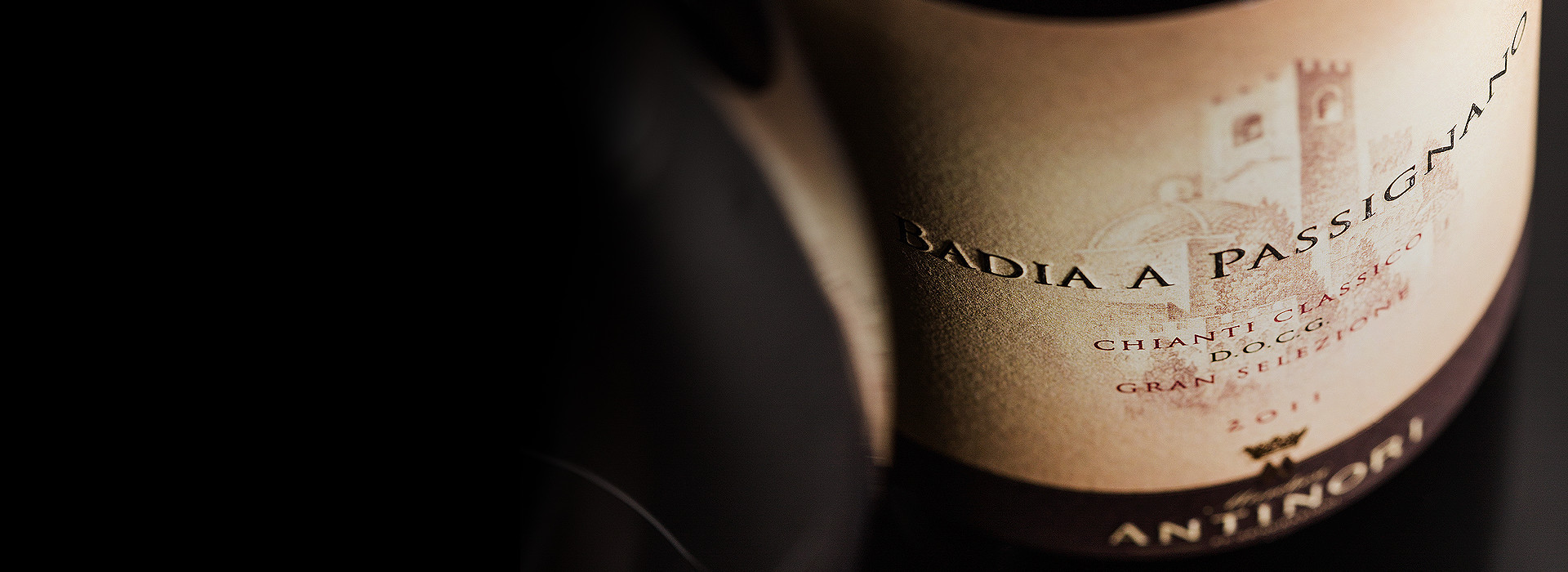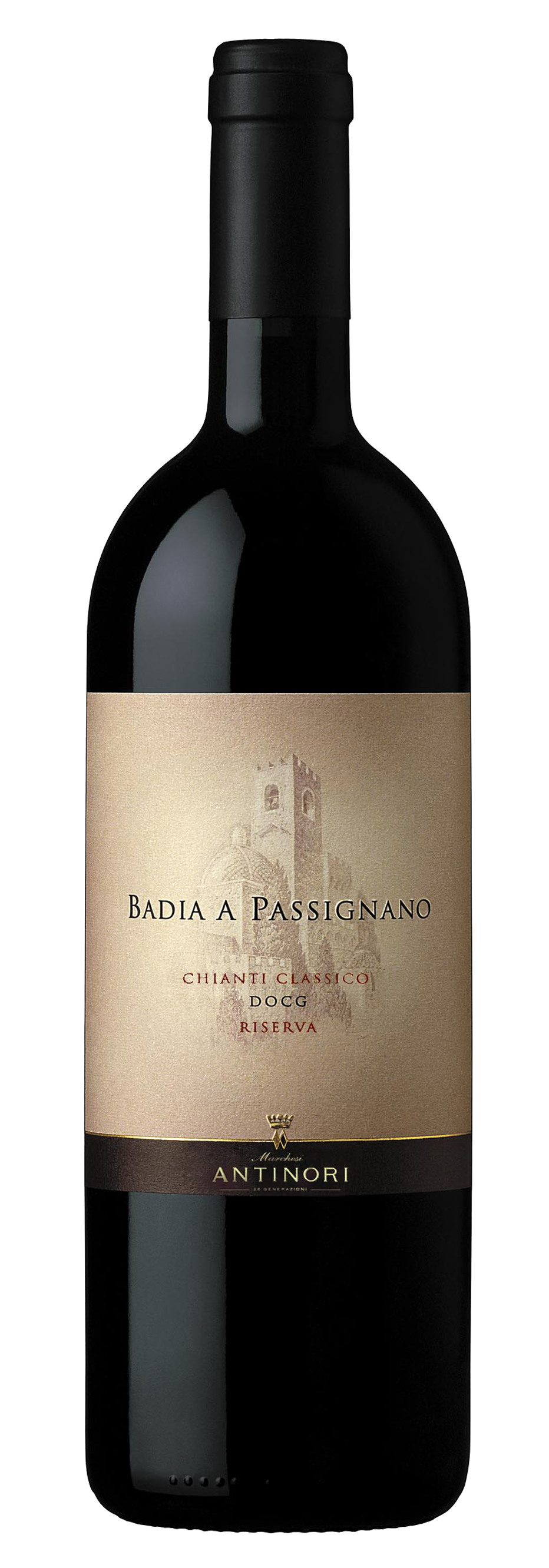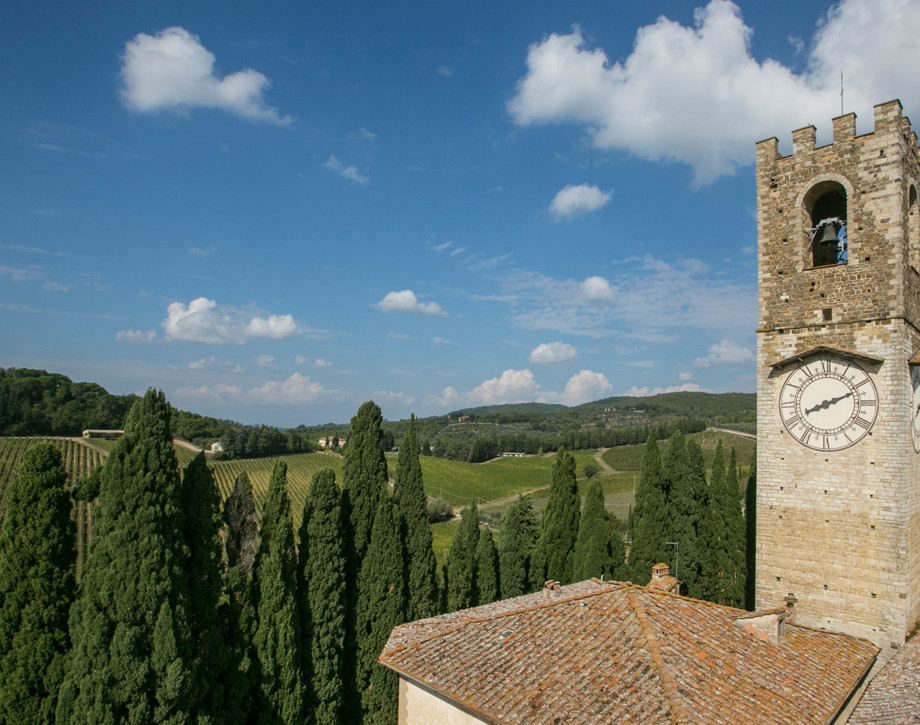Badia a Passignano

Climate
The cold and rainy autumn and a severe winter with noteworthy precipitation caused a slight delay in the sprouting of the plants when compared to previous years. It also rained during the periods of flowering and fruit setting, but the precipitation during those phases did not compromise the normal development and growth and of the grape bunches. The second half of July brought with it very hot weather, but, as opposed to preceding years with high temperatures, August brought a cooler than average climate and frequent precipitation. September and October had warm temperatures during the day and cool nights, with temperature fluctuations which helped along an optimal ripening of the grapes at Badia a Passignano. The excellent climatic conditions allowed the harvest of the sangiovese grapes to be completed within the first week of October. This was very favorable from a qualitative and quantitative point of view, and guaranteed excellent grapes.
Vinification
The high quality of the grapes and especially the optimal meteorological conditions positively influenced this vintage’s potential right from the start. Besides this, the special attention given to the vineyards was fundamental in enabling us to bring qualitatively excellent grapes to the cellars for vinification. After destemming and a gentle pressing, which are critical for sangiovese grapes, the must was put into the appropriate tanks for maceration. It immediately demonstrated its high potential both in terms of phenolics and aromas. Careful pumping overs and dèlestages were carried out and the musts, which had very rich colors, completed alcoholic fermentation while in contact with the grape skins for over two weeks. By year’s end, the wines had carried out malolactic fermentation on their own accord in 300-liter and 225-liter new Hungarian barriques. A small part of the wine was put into 225-liter new French oak barriques. During the subsequent aging period which lasted 14 months, the wine confirmed its great potential, guaranteeing an excellent evolution in wood barrels while being constantly inspected, barrique by barrique. Upon completion of wood aging, the wine was bottled on site and then continued its evolution in the bottle for another 12 months.
Historical data
Badia a Passignano Gran Selezione is produced exclusively from the finest Sangiovese grapes harvested from its namesake vineyard located in the heart of the Chianti Classico region. The region has been respected and appreciated for its outstanding wine production since the year 1000. The vineyards grow at an altitude of approximately 300 meters (984 feet) above sea level on soils rich in limestone with a fair amount of clay. The wine is aged in the historic cellars under the Badia (abbey) of Passignano that dates back to the 10th century.
Tasting Notes
A red wine which makes an incredible impact with its lively color and intense shades. To the nose it is rich and concentrated with a well-preserved smooth, intense aroma, and its fruit-forward character. One can smell the wellbalanced characteristics resulting from its time spent in contact with wood. The wine blankets the palate with softness and well-roundedness and with silky tannins. Its distinctive acidic structure makes Badia a Passignano 2006 a lovely wine with unquestionable longevity, well-suited for longer aging in the bottle.

The Wine
Badia a Passignano Gran Selezione is produced exclusively from the finest Sangiovese grapes harvested from its namesake vineyard located in the heart of the Chianti Classico region. The region has been respected and appreciated for its outstanding wine production since the year 1000. The vineyards grow at an altitude of approximately 300 meters (984 feet) above sea level on soils rich in limestone with a fair amount of clay. The wine is aged in the historic cellars under the Badia (abbey) of Passignano that dates back to the 10th century.

Climate
The cold and rainy autumn and a severe winter with noteworthy precipitation caused a slight delay in the sprouting of the plants when compared to previous years. It also rained during the periods of flowering and fruit setting, but the precipitation during those phases did not compromise the normal development and growth and of the grape bunches. The second half of July brought with it very hot weather, but, as opposed to preceding years with high temperatures, August brought a cooler than average climate and frequent precipitation. September and October had warm temperatures during the day and cool nights, with temperature fluctuations which helped along an optimal ripening of the grapes at Badia a Passignano. The excellent climatic conditions allowed the harvest of the sangiovese grapes to be completed within the first week of October. This was very favorable from a qualitative and quantitative point of view, and guaranteed excellent grapes.
Vinification
The high quality of the grapes and especially the optimal meteorological conditions positively influenced this vintage’s potential right from the start. Besides this, the special attention given to the vineyards was fundamental in enabling us to bring qualitatively excellent grapes to the cellars for vinification. After destemming and a gentle pressing, which are critical for sangiovese grapes, the must was put into the appropriate tanks for maceration. It immediately demonstrated its high potential both in terms of phenolics and aromas. Careful pumping overs and dèlestages were carried out and the musts, which had very rich colors, completed alcoholic fermentation while in contact with the grape skins for over two weeks. By year’s end, the wines had carried out malolactic fermentation on their own accord in 300-liter and 225-liter new Hungarian barriques. A small part of the wine was put into 225-liter new French oak barriques. During the subsequent aging period which lasted 14 months, the wine confirmed its great potential, guaranteeing an excellent evolution in wood barrels while being constantly inspected, barrique by barrique. Upon completion of wood aging, the wine was bottled on site and then continued its evolution in the bottle for another 12 months.
Historical data
Badia a Passignano Gran Selezione is produced exclusively from the finest Sangiovese grapes harvested from its namesake vineyard located in the heart of the Chianti Classico region. The region has been respected and appreciated for its outstanding wine production since the year 1000. The vineyards grow at an altitude of approximately 300 meters (984 feet) above sea level on soils rich in limestone with a fair amount of clay. The wine is aged in the historic cellars under the Badia (abbey) of Passignano that dates back to the 10th century.
Tasting Notes
A red wine which makes an incredible impact with its lively color and intense shades. To the nose it is rich and concentrated with a well-preserved smooth, intense aroma, and its fruit-forward character. One can smell the wellbalanced characteristics resulting from its time spent in contact with wood. The wine blankets the palate with softness and well-roundedness and with silky tannins. Its distinctive acidic structure makes Badia a Passignano 2006 a lovely wine with unquestionable longevity, well-suited for longer aging in the bottle.

Badia a Passignano
Badia a Passignano is located above the town of Sambuca Val di Pesa, just 3 kilometers south of the Tenuta Tignanello estate. The property extends over an area of 223 hectares (551 acres), of which 65 hectares (160 acres) are planted with vines. The vineyards grow at an altitude that varies between 250 meters (820 feet) and 300 meters (984 feet) above seal level on calcareous soil in one of the most naturally endowed and beautiful environments in the Chianti Classico region. The estate’s historical importance in the Chianti region is well documented in hundreds of volumes that are kept in the Florence State Archives that provide descriptions and details about the Sangiovese vineyards and local crops over the centuries. Further proof of this came to light in 1983 when a thousand year old vitis vinifera plant was discovered on the land surrounding Badia a Passignano.

Soil
Predominantly calcareous
















